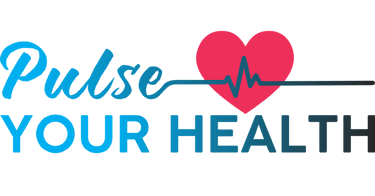Stay updated on what is trending in health. Discover tips and resources for a healthier, balanced life.
Long COVID and Brain Fog: Why Some Just Don’t Bounce Back
Long COVID can cause fatigue, brain fog, and breathlessness for months. Learn symptoms, causes, and treatment options for post-COVID recovery.
DISEASES AND CONDITIONS
Dr. S. Ali
10/10/20256 min read


When most people think about COVID-19, they picture a few rough days of fever, cough, and fatigue — and then recovery. But for millions around the world, the story doesn’t end there. Even after testing negative, they continue to feel unwell for weeks or months. This lingering illness is what doctors now call Long COVID, or post-COVID-19 condition.
So, what’s really happening in the body — and why do some people take so long to recover?
What Exactly Is Long COVID?
Long COVID refers to symptoms that persist or appear after the initial COVID-19 infection has cleared, usually lasting more than four weeks — and sometimes up to a year or more.
You don’t have to be hospitalized or have had a severe case to develop it. In fact, many people with mild infections go on to experience lingering effects. The World Health Organization (WHO) defines Long COVID as symptoms that cannot be explained by another diagnosis and that affect daily life.
Common Symptoms: More Than Just Fatigue
The most reported symptoms of Long COVID include:
Constant tiredness or fatigue: Even simple tasks like getting dressed or walking up stairs can leave you feeling completely drained. Rest doesn’t always make it better, and the exhaustion can come and go unpredictably.
Shortness of breath or chest pain: Many people feel winded after mild activity or notice a tightness in the chest. This may be due to lingering inflammation in the lungs or heart.
Brain fog — trouble concentrating or remembering things. More on this explained below.
Sleep problems: Trouble falling or staying asleep is common, often made worse by fatigue, anxiety, or changes in daily routine. Poor sleep can also intensify other symptoms like brain fog and mood changes.
Joint or muscle pain: Aching muscles, stiffness, or soreness can persist long after recovery. Some describe it as feeling like they’ve “run a marathon” even on quiet days.
Persistent cough: A lingering dry cough may stick around for weeks or months. It can irritate your throat and make talking or sleeping uncomfortable.
Anxiety, depression, or mood changes: Ongoing illness and uncertainty can take a toll on mental health. Many people experience low mood, irritability, or a sense of worry that wasn’t there before.
Heart palpitations: You might feel your heart racing, fluttering, or skipping beats. This can happen even at rest and is often linked to how COVID-19 temporarily affects the heart’s rhythm or nervous system.
Some people even notice hair loss, dizziness, or changes in taste and smell that last for months. These symptoms often come and go, making it frustrating and unpredictable.
Brain Fog and Long COVID: When Your Mind Feels Cloudy
One of the most frustrating parts of Long COVID is something many describe as “brain fog.” It’s not a medical diagnosis, but it perfectly captures how people feel — mentally slow, forgetful, or unable to focus like before.
You might find yourself struggling to remember names, misplacing items, losing your train of thought mid-sentence, or rereading the same paragraph over and over. Tasks that once felt easy can suddenly seem exhausting.
Researchers believe this “fog” may be linked to inflammation in the brain, reduced blood flow, or the body’s prolonged immune response after the infection. Some studies suggest that the virus can indirectly affect the brain’s nerve cells or disrupt communication between them. Sleep problems, stress, and anxiety — all common with Long COVID — can make things worse too.
Tips to Clear the Fog
While recovery takes time, there are ways to help your brain function better:
Prioritize rest: Mental fatigue is real. Schedule breaks and avoid multitasking.
Stay organized: Use notes, reminders, and to-do lists to keep on track.
Sleep well: Good sleep helps your brain recover and process memories.
Eat brain-friendly foods: Include omega-3s (like fish, nuts, and seeds), leafy greens, and plenty of water.
Stay mentally active: Gentle cognitive exercises — reading, puzzles, or memory games — can help rebuild focus over time.
Seek professional help: If concentration or memory issues interfere with work or daily life, talk to your doctor. Some Long COVID clinics offer cognitive rehabilitation programs.
The good news? Most people see gradual improvement over weeks or months. Patience and pacing yourself — both mentally and physically — are key.
Why Does Long COVID Happen?
Researchers are still trying to understand the full picture, but there are several leading theories:
Immune system overdrive: The body’s immune system may stay activated long after the infection is gone, causing ongoing inflammation.
Viral remnants: Fragments of the virus might remain hidden in the body and keep triggering symptoms.
Nerve and organ damage: COVID-19 can damage the lungs, heart, or brain — effects that take time to heal.
Blood circulation issues: Tiny clots or changes in blood vessels may reduce oxygen flow to tissues.
It’s likely a mix of these factors, depending on the person.
Who Is Most at Risk?
Anyone can develop Long COVID — even young, healthy people — but the risk seems higher in:
Women
People over 40
Those with underlying health conditions (like diabetes or heart disease)
People who had multiple symptoms during their initial infection
Unvaccinated individuals
Studies also show that being vaccinated before catching COVID-19 can reduce your chances of developing long-term symptoms.
How Is Long COVID Diagnosed?
There’s no single test for Long COVID. Doctors usually rule out other possible causes first, then assess symptoms and medical history. Some may order blood tests, chest X-rays, or heart and lung function tests.
Because the symptoms vary so much, a team approach — involving your primary care doctor, pulmonologist, cardiologist, or neurologist — often works best.
Managing and Treating Long COVID
There’s no one-size-fits-all treatment yet, but recovery is possible — and support is growing. Here’s what helps most people:
Pace yourself: Don’t push too hard. Listen to your body and rest when needed.
Gradual exercise: Light physical activity can help rebuild strength, but overdoing it can make fatigue worse.
Eat well and stay hydrated: A balanced diet supports healing and energy levels.
Mental health care: Anxiety and depression are common — counseling or support groups can make a big difference.
Rehabilitation programs: Many hospitals now offer Long COVID clinics focusing on breathing, mobility, and mental wellbeing.
Remember: even if progress feels slow, most people do improve with time and support.
Can You Prevent Long COVID?
The best protection remains not getting infected — or keeping infections mild through vaccination and boosters. Wearing masks in crowded indoor spaces, maintaining good ventilation, and staying home when sick all help reduce risk.
If you do catch COVID-19, rest properly during recovery. Trying to bounce back too quickly can sometimes delay healing.
New COVID Strains and the Risk of Long COVID
With new COVID-19 variants still emerging, many people wonder whether the newer strains are more or less likely to cause Long COVID. Early research suggests that while newer variants like Omicron often cause milder acute infections, they can still lead to long-term symptoms — especially in people who are unvaccinated or experience repeat infections. Each infection may slightly increase the risk of lingering problems such as fatigue, brain fog, or breathlessness.
Vaccination and booster doses appear to lower the risk of Long COVID, even with the newer variants, by helping your immune system clear the virus faster and reducing inflammation. So, staying up to date on vaccines remains one of the best ways to protect both your short-term and long-term health.
When to See a Doctor
If you’re still feeling unwell four weeks after a COVID infection, don’t ignore it. Persistent fatigue, breathlessness, or chest pain are all reasons to check in with your doctor. Early evaluation can help rule out serious issues and guide you toward proper care.
Living with Long COVID: Finding Hope
Living with a lingering illness can be discouraging, especially when others expect you to be “over it.” But you’re not alone — millions worldwide are navigating the same journey. With ongoing research, specialized clinics, and increasing awareness, there’s more help — and hope — than ever before.
Related Articles:
1. New COVID Variant NB.1.8.1: How Dangerous Is It? Symptoms, Transmission and Updates
2. Summer COVID-19 Update: Stratus Variant & Rising US Cases
3. XFG & Other COVID-19 Variants: How They’re Changing the Game
4. COVID-19 Vaccines: What You Need to Know (And Why It Still Matters)
Sources
World Health Organization (WHO) — “Post COVID-19 condition (Long COVID)”
A widely accepted fact sheet defining long COVID, criteria, prevalence estimates, and recommended approaches.National Institutes of Health / NHLBI (NIH’s heart & lung research arm) — “Long COVID | NHLBI, NIH”
Provides explanations of how symptoms linger, possible mechanisms, and ongoing research.PubMed Central / NCBI Bookshelf — “A Long COVID Definition”
A review that explains definitions, symptom ranges, challenges in research, and terminology debates.PMC (PubMed Central) — “Long COVID: major findings, mechanisms and recommendations”
A deep dive into what’s known so far: symptoms, mechanisms, and gaps in current knowledge.CDC (Centers for Disease Control and Prevention) — “Long COVID Basics” & “Clinical Overview of Long COVID”
Practical, updated guidance for clinicians and general audiences alike.PMC — “Post-COVID Syndrome in Adults — An Overview”
Good overview of the many symptoms, definitions, and challenges in research.The Lancet / EBioMedicine — “Generalisable long COVID subtypes …”
More technical: useful when discussing subtypes, patterns, or stratification in long COVID.RECOVER Initiative (NIH’s long COVID research program)
The main U.S. research initiative driving large-scale studies to understand, treat, and prevent Long COVID.
Pulse Your Health
Empowering you to achieve your health goals.
Contact
© 2025. All rights reserved.
Disclaimer: The content on this website is for informational purposes only and is not medical advice. Always seek the advice of your physician or other suitably qualified healthcare professional for diagnosis, treatment and your health related needs.
